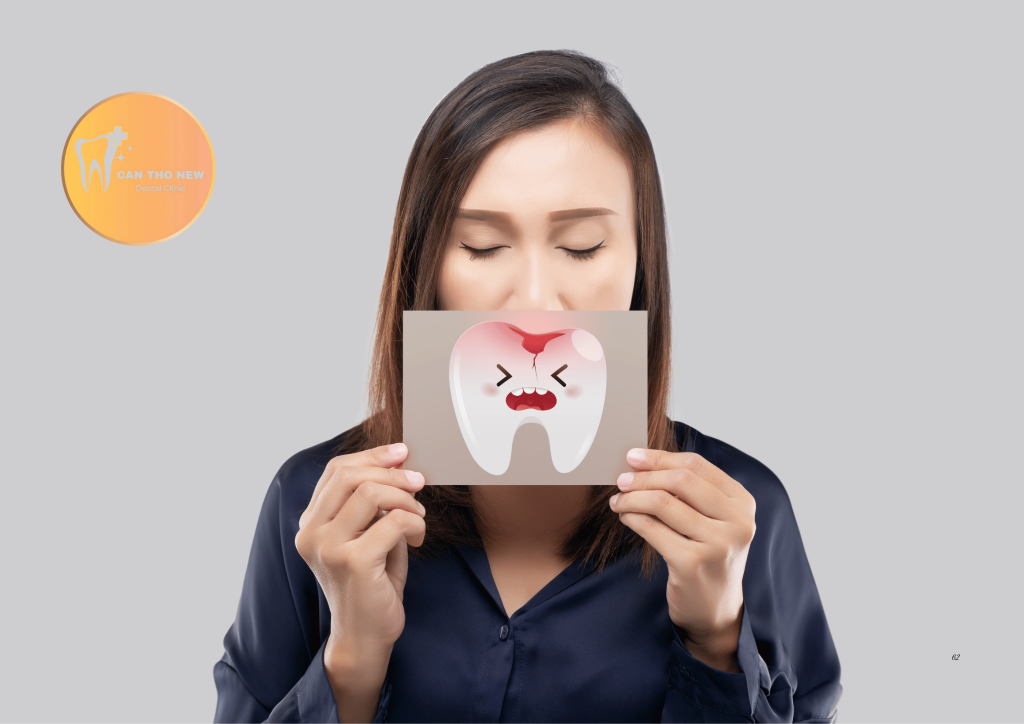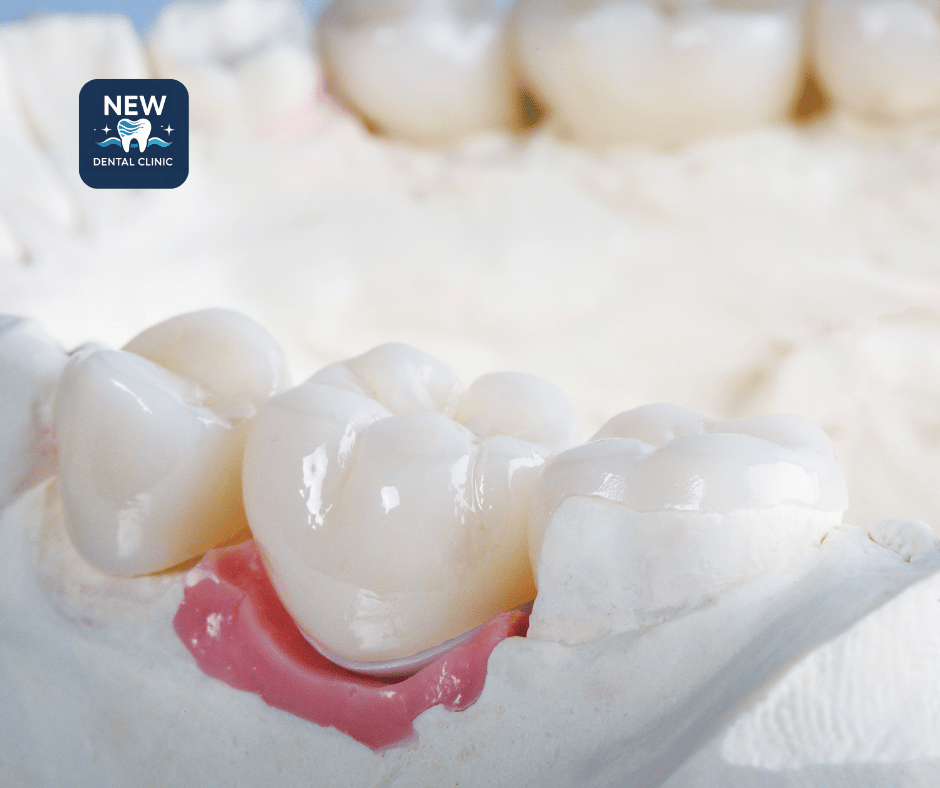
Hello again.
We have journeyed together to understand the world of cosmetic dentistry. After exploring the detailed A-to-Z dental crown procedure, you now have a clear roadmap of what to expect. But I know that even with a clear understanding of the steps, one private yet powerful question remains, lingering in your mind: Is getting porcelain crowns painful?
The fear of pain, of the sound of the drill, of sensitivity… is a completely natural and valid psychological barrier. In over a decade of experience, this is the question I am asked most frequently, even more so than questions about cost or materials.
Therefore, this article is dedicated to answering that question in the most honest, detailed, and scientific way possible. My goal is not simply to say “it doesn’t hurt,” but to “dissect” the sensations at each stage, explaining why modern dental technology can control pain and deliver a comfortable experience. Let this knowledge dispel your fears and help you confidently embark on the journey to create the smile you deserve after completing your research on porcelain crowns.
The Expert’s Affirmation: A PROPERLY EXECUTED Crown Procedure is NOT PAINFUL

This is the first and most important point I want to affirm. With the dental technology and techniques available in 2025, a porcelain crown procedure performed by a skilled dentist at a reputable clinic will NOT CAUSE YOU PAIN.
This comfort is achieved through two core factors:
The “Weapon” Against Pain: Modern Anesthetic Technology
The greatest fear is often associated with the tooth preparation (or “grinding”) step. However, this entire process is performed under the control of a local anesthetic.
- Before the Injection: The dentist will apply a layer of topical anesthetic gel or spray to the gum area. This gel numbs the surface lining, meaning you will barely feel the injection needle afterward.
- During the Injection: Modern injection techniques are very gentle. The dentist will administer the anesthetic slowly to reduce pressure, and with ultra-fine needles, the sensation is merely a light “pinch” that lasts for a moment.
- Anesthetic Effectiveness: Today’s dental anesthetics are very powerful and last long enough for the entire treatment session. The tooth and surrounding soft tissues will be completely numb, and you will not have any sensation of pain while the dentist works.
The Dentist’s Skill – The Decisive Factor in Your Experience
Technology is the tool, but the one who determines your experience is the dentist. A good, experienced dentist will:
- Operate with Precision and Gentleness: Minimizing trauma to the surrounding soft tissues.
- Control Temperature Effectively: Always use a dental handpiece with a continuous water spray system to prevent heat and irritation to the tooth’s pulp.
- Communicate and Empathize: Constantly observe and communicate with you throughout the process, ready to pause if you show any signs of discomfort.
“Dissecting” the Sensations at Each Stage of the Crown Procedure
To provide a detailed answer to the question, “is getting porcelain crowns painful?”, let’s analyze the actual sensations you might experience at each step.
The First Appointment: Examination, X-rays, and Consultation

This is the “getting acquainted” stage and involves absolutely no pain-inducing interventions.
- Sensation: You will feel completely normal and comfortable. Procedures like the intraoral exam, taking X-rays, or taking study impressions are very gentle. This is an opportunity for you to get comfortable with the dentist and the clinic environment, which helps reduce anxiety for subsequent appointments.
The Second Appointment: Anesthesia, Tooth Preparation, and Placing Temporary Crowns

This is the appointment that causes the most anxiety. Let’s break down what it really feels like.
- Sensation During Anesthetic Injection: As mentioned above, you will feel a slight, sharp pinch for 1-2 seconds, after which a feeling of numbness will spread through your lip, cheek, and tongue.
- Sensation DURING Tooth Preparation:
- Regarding Pain: YOU WILL NOT FEEL PAIN. The anesthetic has completely blocked all pain sensations.
- Regarding Other Sensations: It is crucial to distinguish between “pain” and other “sensations.” You will experience:
- Sound: The “whirring” sound of the dental handpiece. This is unavoidable. Many modern clinics offer headphones with music to help you relax.
- Vibration: A light vibration transmitted from the handpiece to the tooth.
- Pressure: A gentle pressure as the dentist maneuvers the instrument.
- Water: The cool sensation of the continuous water spray in your mouth. None of these sensations are pain. Understanding this will help you prepare mentally much more effectively.
- Sensation AFTER the Anesthetic Wears Off:
- After about 2-3 hours, the anesthetic will fade. You may feel some mild sensitivity or a slight ache in the prepared tooth area. This is completely normal, similar to the feeling after a deep teeth cleaning.
- The level of sensitivity depends on the initial condition of the tooth and your individual physiology, but it is typically mild and subsides after 1-2 days. Your dentist will prescribe standard pain relievers for you to use if needed.
The Temporary Crown Phase
- Initial Sensation: When the temporary crowns are first placed, you might feel that they are slightly “different,” a bit bulky, or foreign. This is because you are not yet used to them. After 1-2 days, this feeling will disappear.
- Regarding Sensitivity: The temporary crowns act as a protective layer for the prepared tooth structure. Therefore, sensitivity to hot or cold foods will be significantly minimized. However, you should avoid extremely hard or chewy foods during this period.
The Final Appointment: Cementing the Permanent Crowns
This appointment is typically very gentle and painless.
- Sensation: Procedures like removing the temporary crowns, cleaning the prepared teeth, and trying in the final crowns are completely comfortable. When the permanent crowns are cemented, you might feel a slight, firm pressure as the dentist seats them into their final position. This entire process does not require anesthesia.
Is Getting Porcelain Crowns Painful? Analyzing the Factors that Influence Your Sensation

Although the standard procedure is painless, each person’s experience can be slightly different. Why is that?
The Initial Health of Your Teeth
This is a very important factor.
- Healthy Teeth: If your teeth are completely healthy before getting crowns, the level of post-operative sensitivity will be very low or non-existent.
- Sensitive Teeth, Cavities, or Pulp Inflammation: If your tooth already had a pre-existing issue (e.g., a deep cavity near the pulp), it will be more sensitive after preparation. In many cases, the dentist will need to perform a root canal treatment before placing the crown to eliminate any risk of future pain.
Each Person’s Individual Pain Threshold
We all have different tolerances for discomfort. The important thing is to communicate openly with your dentist about your anxieties. A caring dentist will know how to make you feel as secure and comfortable as possible.
The Dentist’s Technique and Skill (The Most Important Factor)
I must emphasize this again. A dentist with a masterful preparation technique and precise, decisive movements will minimize trauma to the tooth and surrounding tissues. Conversely, a rough or poorly controlled technique can damage the tooth pulp and lead to prolonged pain.
The Technology and Materials Used
New-generation dental handpieces run smoother and with less vibration. 3D scanning technology makes the impression process much faster and more pleasant. Choosing a clinic that invests in technology is also an investment in your own comfort.
When Does “Pain” Become an Abnormal Sign?
Understanding this will help you protect your own health. After getting porcelain crowns, if you experience any of the following signs, they are not normal, and you should contact your dentist immediately.
Differentiating Between “Sensitivity” and “Ache/Pain”
- Physiological Sensitivity (Normal): A brief, sharp sensation when consuming hot or cold items or breathing in cold air. This feeling typically diminishes and disappears within a few days to 1-2 weeks.
- Pathological Pain (Abnormal): A spontaneous, prolonged, dull, or throbbing ache that occurs even without a stimulus. This could be a sign that the tooth pulp has been damaged.
Warning Signs That Require Immediate Contact with Your Dentist
- Severe, continuous pain, especially at night.
- Pain upon biting or chewing firmly: This is a clear sign that the crown’s bite is too high and needs immediate adjustment.
- Swollen, red, tender, or bleeding gums around the crown, or presence of pus: A sign that the crown is not fitting properly, causing inflammation.
Tips for the Gentlest and Most Comfortable Crown Experience Possible
You can actively contribute to making your experience better.
- Before Treatment:
- Communicate Openly: Tell your dentist about your fears.
- Stay Relaxed: Get a good night’s sleep the night before.
- Eat a Light Meal: Have a light meal before your preparation appointment, as you will need a few hours for the anesthetic to wear off afterward.
- During Treatment:
- Use a Hand Signal: Agree on a hand signal (e.g., raising your left hand) with your dentist to let them know if you’re feeling uncomfortable and need a break.
- Distract Yourself: Focus on deep, steady breathing, or listen to music through headphones.
- After Treatment:
- Follow Instructions: Take any prescribed medication exactly as directed.
- Apply a Cold Compress: If you experience slight swelling or aching, applying a cold pack to the outside of your cheek can help reduce discomfort.
- Diet: Eat soft, cool foods for the first 1-2 days. Avoid foods that are too hard, chewy, hot, or cold.
Now that your biggest fear about whether getting porcelain crowns is painful has been addressed, you can rest assured that it is a well-controlled and very gentle experience with modern technology. When the initial sensations have passed and you have become accustomed to your new smile, another, more long-term question will emerge: “How durable is this investment?”. Will this radiant smile stay with you for 5, 10, or 20 more years? To answer this question about long-term value, I invite you to join me in our next article: “Are Porcelain Crowns Durable? How Long Do They Last?”.

